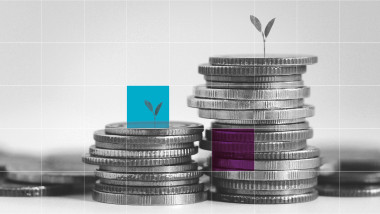How Green are Green Bonds?

|
|---|

|
|---|
As sustainable investing continues to explode in popularity, many are looking to green bonds as the latest – and perhaps most effective – sustainable investment vehicle in the fight against climate change.
It’s not hard to see why: whereas some sustainable equity or fixed income investors may merely exclude worst offenders, many green bonds are used specifically to fund projects that have positive environmental and climate benefits. This includes areas as diverse as green buildings, electric vehicles, smart transport, renewable energy, re-forestation, or even waste management.
Issuers of all stripes have come to market in recent years. In 2021 alone, issuance of green bonds topped $517 billion, up a staggering 74% from $297 billion the previous year, according to the non-profit organisation Climate Bonds Initiative1.
Such investment is sorely needed: the European Commission, for example, estimates that the EU requires an additional $350 billion in investment each year to meet its lofty 2030 emission reduction targets, alongside another $130 billion for other environmental goals2.
Meanwhile, Climate Bonds Initiative predicts annual green bond issuance will have to reach a staggering $5 trillion a year – a near tenfold increase from the record 2021 issuance – as early as 2025 if the global economy is to achieve Net Zero by 20501.
Awash with green
Yet while the rapid growth of the green bond market is a positive overall, critics claim there’s been numerous cases of ‘greenwashing’ – conveying a false impression or providing misleading information about how a company’s products, processes or corporate strategies are environmentally friendly whereby countries or companies make false or exaggerated claims to raise money in the most dynamic part of the fixed income markets.
Whether it’s raising money to build a new runway, in the case of Hong Kong’s Airport Authority3, or issuing green debt while remaining one of the world’s biggest polluters, like Saudi Arabia, contradictions abound4 Even Belarus and Russia had previously gotten in on the act, selling so-called ESG bonds to money managers. In fact, some green bond experts believe that barely half of the investable green bond universe is truly ‘green’5 .
What’s behind this worrying trend? The insatiable appetite for green bonds has allowed new, and perhaps questionable, entrants to easily tap the market to fund routine business. But experts also point to a lack of global principles or standards as one of the biggest challenges facing the market.
Currently, green bonds can be issued under a variety of purely voluntary standards and guidelines put forward by organisations such as Climate Bonds Initiative. Yet many are not. That’s prompted calls by some, including European policymakers, for mandatory standards to tackle greenwashing – possibly linking new green bonds to the EU’s sustainable finance taxonomy.
It’s not entirely clear how successful this may be. Worse, others say, it risks stifling a burgeoning market that’s now crucial to funding the hugely ambitious energy transition5.
For now, it remains a key area of debate and uncertainty. And while there’s been no final say just yet, EU policymakers will likely try to strike a balance in the coming years ahead.
Measuring impact
Given this ongoing uncertainty, how can investors make sure their green bond investments are having the desired impact? The first step is to invest with an active and specialist green bond manager, rather than an index that may have exposure to unscrupulous issuers.
Investing with an Article 9 ESG fund, as opposed to an Article 8 ESG fund, is one way to have greater trust that the manager’s underlying investments are tied to the EU’s green taxonomy. But it’s also important to understand the manager’s process for analysing green bonds – and why they weed out certain bonds.
Some managers, for instance, will only invest in an issuer if the environmental or social impacts are sufficiently clear and achievable. That makes sense: while it’s easy to dazzle would-be investors with ambitious goals or projects, such causes need to be realistic. This, in turn, means these bonds are likely to be properly earmarked for the desired project.
Traceability is also important, especially over the life cycle of the bond, and investors are now demanding yearly impact updates on their fixed income investments.
But managers may also want to examine how the project fits into the issuer’s overall sustainable development strategy. While China or Saudi Arabia may have legitimate green projects in need of external funding, for instance, some may find it hard to make the case that their governments are wholly committed to the sustainable energy transition – and many managers will exclude these sovereigns from their universe as a result.
Despite its growing popularity, therefore, it’s fair to say that green bond investing is more of an art than a science for now. But investing with an experienced active manager is one way you can navigate this complex landscape – and ensure that your green bond investments really are making the impact you’d intended.
GLOSSARY
- EU Taxonomy – The EU taxonomy is a classification system, establishing a list of environmentally sustainable economic activities. The taxonomy provides companies, investors and policymakers with appropriate definitions for which economic activities can be considered environmentally sustainable.
- Fixed income – an asset class that pays out a set level of cash flows to investors, typically in the form of fixed interest or dividends, until the investment’s maturity date – the agreed-upon date on which the investment ends, often triggering the bond’s repayment or renewal. At maturity, investors are repaid the principal amount they had invested in addition to the interest they have received. Typical fixed income investments include government bonds, corporate bonds and, increasingly in recent years, green bonds.
- Green bond – A green bond is a fixed-income instrument designed specifically to support specific climate-related or environmental projects. They can be issued by governments, quasi-government organisations, or corporates.
- Issuance – the ‘bond market’ broadly describes a marketplace where investors buy debt securities that are brought to the market, or ‘issued’, by either governmental entities or corporations (‘issuers’). National governments typically ‘issue’ bonds to raise capital to pay down debts or fund infrastructural improvements. Companies ‘issue’ bonds to raise the capital needed to maintain operations, grow their product lines, or open new locations.
- Net zero – A concept that attempts to describe the balancing of greenhouse-gas (GHG) emissions so that the sum of all GHGs emitted from human activities is zero. The point where we get to ‘net zero’ is the point at which any residual emissions of GHGs are balanced by technologies that remove them from the atmosphere.
- SFDR – The Sustainable Finance Disclosure Regulation (SFDR) is a European regulation, which sets out rules for classifying and reporting on sustainability and ESG factors in investments. It was introduced to improve transparency in the market for sustainable investment products, to prevent greenwashing and to increase transparency around sustainability claims made by financial market participants and hence direct capital towards more sustainable investments.
The SFDR regulation requires asset managers to sort their products into different categories based on the product's extra-financial characteristics, with disclosure obligations being proportionate to the product’s ESG ambition. The regulation’s aims are to enable the end-user to clearly understand and compare the underlying sustainability characteristics of any investment fund. This forms part of a wider challenge in preventing 'greenwashing' – where a fund claims to be sustainable when in fact it is not.
Under SFDR, products are categorised as articles 6, 8 or 9:- Article 6 is the default classification for products with no ESG focus. These products may consider ESG risks as part of the investment process, but they do not promote any kind of extra-financial features and do not consider ESG criteria in a binding manner in the investment process.
- Article 8 is applied to products that promote, among other characteristics, environmental and/or social characteristics as part of a broad investment strategy, provided that the companies in which the investments are made follow good governance practices
- Article 9 products are designated as having a sustainable investment as their objective as defined by SFDR Article 2 (17)
Further details – such as methodology and tools used for the ESG strategy – are available in mandatory website disclosures for each Article 8 and Article 9 product. Those product’s periodic reports also include a standardized annex for the purpose of disclosing ex-post indicators and commenting on extra-financial aspects.
2 Source: European Commission, https://ec.europa.eu/commission/presscorner/detail/en/speech_21_3506
3 Source: Reclaim Finance, https://reclaimfinance.org/site/en/2022/01/04/high-flying-greenwashing-around-a-new-green-bond/
4 Source: Reuters, https://www.reuters.com/markets/funds/saudi-arabias-sovereign-fund-lays-out-plan-green-financing-2022-02-28/
5 Source: Financial Times, https://www.ft.com/content/d797800b-fb07-40c7-8386-a22de312cd35
The provision of this material and/or reference to specific securities, sectors, or markets within this material does not constitute investment advice, or a recommendation or an offer to buy or to sell any security, or an offer of any regulated financial activity. Investors should consider the investment objectives, risks and expenses of any investment carefully before investing. The analyses, opinions, and certain of the investment themes and processes referenced herein represent the views of the portfolio manager(s) as of the date indicated. These, as well as the portfolio holdings and characteristics shown, are subject to change. There can be no assurance that developments will transpire as may be forecasted in this material. The analyses and opinions expressed by external third parties are independent and does not necessarily reflect those of Natixis Investment Managers. Past performance information presented is not indicative of future performance.




 All Aboard the Energy Transition?
All Aboard the Energy Transition?
 Should You Pay More for Green Bonds?
Should You Pay More for Green Bonds?
 All back to bonds?
All back to bonds?
 Mirova B(ey)ond Green - Sustainable bond investments: What's new?
Mirova B(ey)ond Green - Sustainable bond investments: What's new?